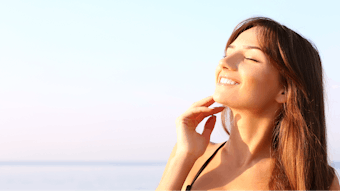The U.S. Food and Drug Administration has approved only three products to protect skin from UVA rays. Those ingredients are avobenzone, titanium dioxide, and zinc oxide. Tinosorb and Mexoryl SX have also been found to protect against UVA rays, however, they are only approved outside of the United States.
Avobenzone, more commonly known as Parsol 1789 is the ingredient used in most sunblocks to absorb damaging UVA rays. According to Hawaiian Tropic, Avobenzone can degrade over time but is the most successful UVA screen.
The company’s solution--to make the ingredient photostable using its SunSure proprietary combination of ingredients. This technology has been incorporated into each of its sun care products for this summer, and the company reports that extensive tests have revealed its products to be UVA/UVB photostable. According to the company, its products protect against a broad spectrum and have been shown to be shotostable through sun and solar simulator testing. The products also reportedly have less degradation to reduce free radicals.
Hawaiian Tropic claims that there are few other sun care products that have incorporated its SunSure technology into their lines.
Avobenzone and octinoxate, according to the company is an ingredient combination in sun care products that is particularly susceptible to photodegradation. The sun care company cautions against sun care products containing the two ingredients.
Photodegradation of sun care products can be avoided, added the sun care company, by constant reapplying. The company also reports its new product line to include less chemical sunscreens. A typical 45 SPF product contains nearly 25 percent chemical sunscreen. The Hawaiian Tropic 60 SPF Sport, however, is reportedly only 12.5 percent chemical sunscreens. Hawaiian Tropic achieves a smaller percentage of chemical sunscreens in their products by using special combinations of ingredients and sunscreens.
-Katie Schaefer, C&T Magazine










